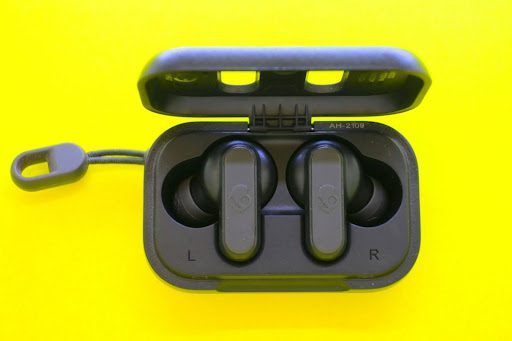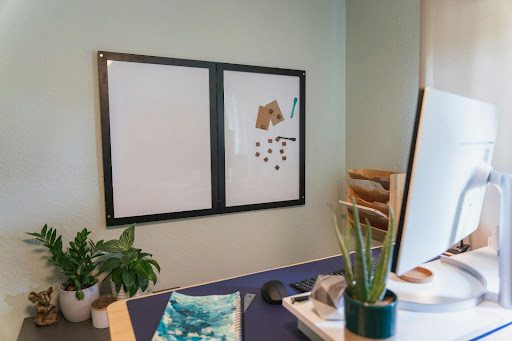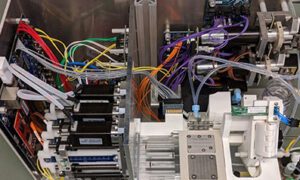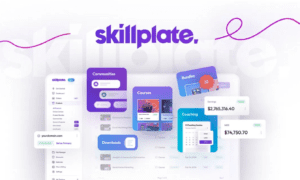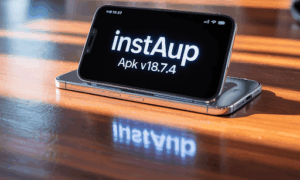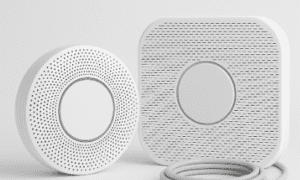We’re living in an interesting moment. Technology has become so deeply woven into our daily routines that we barely notice it anymore. Your smartphone alarm wakes you up, your smart speaker tells you the weather while you make coffee, and by the time you sit down to work or help your kids with homework, you’ve already interacted with a dozen different pieces of technology without giving it much thought.
But here’s what separates people who feel overwhelmed by technology from those who feel empowered by it: intentionality. The most successful approach isn’t about having the latest gadgets or the most apps. It’s about understanding which technologies actually solve problems you have and which ones just create new complications.
This matters more than ever as our lives blend work, learning, entertainment, and family time in ways previous generations never experienced. Your home office might be your kitchen table. Your child’s classroom might be their bedroom. The tools that help one family member focus might distract another. Getting this balance right requires thinking carefully about what technology you bring into your life and why.
Let’s explore how making smart choices about technology, from personal audio equipment to educational resources, can genuinely improve your productivity, support better learning outcomes, and reduce daily friction rather than adding to it.
The Sound of Focus: Why Audio Technology Matters More Than You Think
Start paying attention to what successful people carry with them, and you’ll notice something: almost everyone has a solid pair of headphones or earbuds. This isn’t about fashion or showing off expensive gear. It’s about understanding that controlling your audio environment is one of the most powerful productivity tools available.
Think about your typical day. You’re trying to concentrate on a complex project, but your coworker is on a loud phone call. You’re attempting to write something that requires deep thinking, but there’s construction happening outside your window. You need to take a video call, but you’re in a coffee shop because working from home with kids around isn’t feasible today. In every one of these scenarios, good audio equipment doesn’t just make things slightly better. It makes previously impossible situations workable.
The evolution of wireless audio technology over the past few years has been remarkable. Early Bluetooth headphones were plagued with connectivity issues, terrible battery life, and sound quality that made music lovers wince. Today’s options are completely different beasts. The technology has matured to the point where wireless options often match or exceed wired alternatives in sound quality while adding convenience that genuinely changes how you work and move through your day.
But not all wireless audio solutions are created equal. The specific form factor matters enormously based on how you actually use them. Over-ear headphones provide excellent sound quality and noise isolation, but they’re bulky to carry and can feel oppressive during long wearing sessions, especially in warm weather. On-ear options split the difference but often create pressure points that become uncomfortable after an hour or two.
This is where the market has increasingly shifted toward truly wireless earbuds. The advantages go beyond just convenience. Modern true wireless in ear headphones offer impressive sound quality in a package small enough to keep in your pocket all day. You’re not planning your bag around whether your headphones will fit. You’re not dealing with cables that tangle or get caught on things. You can seamlessly switch from a work call to a walk outside to focused writing time without ever thinking about your audio setup.
The technology packed into these tiny devices has become genuinely impressive. Active noise cancellation that was once the domain of bulky over-ear headphones now fits in something the size of a large grape. Battery life that would have seemed impossible five years ago is now standard. Many models automatically pause when you remove an earbud and resume when you put it back in. They detect whether you’re speaking and can pipe your own voice through so you don’t accidentally shout while on calls.
For people juggling multiple roles throughout the day, the ability to have consistent, high-quality audio in a form factor that essentially disappears changes the game. Parents working from home can take calls without broadcasting everything to their kids doing homework in the next room. Students can focus on online lectures without being distracted by household noise. Commuters can switch seamlessly from podcasts to calls to music without fumbling with cables or bulky equipment.
The investment in quality wireless earbuds pays dividends daily. You use them more because they’re always available. You’re more productive because you can create your optimal audio environment anywhere. You’re less stressed because you’re not constantly fighting environmental noise or dealing with tangled cables. These aren’t minor quality-of-life improvements. They’re fundamental shifts in how you interact with your environment and manage your attention.
Sound quality matters too, though not necessarily in the audiophile sense most people assume. Yes, music should sound good, but what really matters for daily use is clarity in the frequencies where human speech lives. Can you understand every word on a conference call even when someone has a spotty connection? Can you hear the nuance in a podcast when you’re walking next to a busy street? Can you focus on the task at hand when you put on your focus playlist? These practical questions matter more than theoretical frequency response charts.
Comfort becomes crucial too. Earbuds you wear for fifteen minutes are very different from ones you wear for several hours. The right fit makes them almost disappear. The wrong fit means constant adjustment and eventually giving up and removing them. Most quality options come with multiple ear tip sizes and styles precisely because everyone’s ears are different. Taking the time to find the right fit transforms the experience from tolerable to genuinely comfortable for extended wear.
The Learning Curve: Technology’s Role in Modern Education
While personal productivity tools like quality audio equipment help adults manage increasingly complex work lives, technology plays an equally transformative role in how children learn and develop skills. But here’s where things get tricky. The same devices and connectivity that enable incredible educational opportunities also create potential pitfalls if not used thoughtfully.
The past few years have forced education to evolve rapidly. Remote learning became the norm overnight in many places. Teachers scrambled to adapt lesson plans for digital delivery. Parents suddenly found themselves serving as teaching assistants, technology troubleshooters, and motivators all at once. Even as in-person learning has returned in most places, the genie is out of the bottle. Everyone has seen both the potential and the limitations of technology-enhanced learning.
What’s become clear is that technology alone doesn’t improve educational outcomes. A child with access to a tablet and educational apps isn’t automatically learning more than one without. What matters is how technology is used, whether it’s complementing good teaching and engaged parenting rather than replacing it, and whether it’s making learning more engaging and accessible or just providing another distraction.
The most effective educational technology shares certain characteristics. It’s interactive rather than passive. It provides immediate feedback so students know whether they’re on the right track. It adapts to the student’s level so they’re challenged but not frustrated. It connects abstract concepts to concrete examples or practical applications. And crucially, it’s engaging enough that students want to use it rather than viewing it as just another chore.
Parents and teachers are constantly searching for resources that meet these criteria. Finding materials that make learning feel like play rather than work is the holy grail, especially for subjects that many students find dry or intimidating. Math frequently falls into this category. It’s foundational, it’s cumulative (meaning gaps in understanding compound over time), and it’s abstract in ways that make it hard for many students to see the relevance to their lives.
This is where creativity in educational resources makes a real difference. Taking mathematical concepts and presenting them in contexts that students already find interesting or exciting transforms the learning experience. Seasonal themes work particularly well because they tap into existing enthusiasm and cultural touchpoints that kids are already experiencing.
Making Learning Stick: Engagement Through Themed Educational Content
Consider how different subjects feel to students. Social studies comes alive when you visit historical sites or connect events to stories about real people. Science gets exciting when you do experiments and see principles in action. Language arts becomes engaging when you read stories that capture your imagination or write about topics you care about. Math, unfortunately, often gets taught in abstract terms that feel disconnected from anything meaningful in a student’s life.
The challenge for parents and teachers is finding ways to bridge this gap. You need materials that teach the actual mathematical concepts students need to master while presenting them in contexts that feel relevant, interesting, or fun. Holiday and seasonal themes provide natural opportunities here. Kids are already excited about these occasions, so leveraging that existing enthusiasm to sneak in some learning just makes sense.
Halloween, in particular, offers rich thematic possibilities. There’s counting candy, calculating candy distribution strategies, measuring ingredients for spooky treats, working with symmetry in jack-o-lantern designs, and graphing costume preferences. The mathematical concepts are the same ones students need to master anyway, but the context makes them feel less like schoolwork and more like part of the fun.
For parents looking to supplement their child’s regular math education or teachers wanting to make October lessons more engaging, resources like halloween math activity sheets provide ready-made materials that combine educational rigor with seasonal fun. These aren’t just math worksheets with clip art pumpkins slapped on. Well-designed themed materials integrate the concepts and the theme in ways where the theme actually enhances understanding rather than just decorating the page.
The beauty of themed educational materials is that they reduce resistance. Students who might groan at “math homework time” are often willing to work on “Halloween activities.” The psychological difference seems minor but has real impact on engagement and learning outcomes. When students approach material with positive rather than negative associations, they learn better and retain more.
Timing matters too. Using seasonal materials when that season is actually happening taps into cultural momentum. Your child is seeing Halloween decorations, planning their costume, and thinking about trick-or-treating anyway. Math activities that connect to these existing thoughts feel relevant rather than random. This relevance increases engagement and helps students see that mathematical thinking applies to real-world situations they care about.
The Integration Challenge: Balancing Technology and Traditional Learning
One of the ongoing tensions in education is finding the right balance between digital and analog learning experiences. Technology offers undeniable advantages: instant feedback, adaptive difficulty, multimedia explanations, and easy access to vast information. But traditional methods like writing by hand, working with physical manipulatives, and unplugged problem-solving have benefits that technology hasn’t successfully replicated.
The research on this is interesting. Students who take handwritten notes often retain information better than those who type, possibly because the slower process forces more cognitive processing. Young children learning basic number concepts benefit from physically manipulating objects. Reading comprehension tends to be higher with physical books than screens for many people. At the same time, educational software can provide practice and feedback at scales impossible for human teachers, and can present concepts through animations and simulations that illuminate understanding in powerful ways.
The answer isn’t choosing one approach over the other. It’s being intentional about using each where it offers the most benefit. Use technology for what it does well: providing practice with immediate feedback, presenting dynamic visualizations, adapting to student level, and making certain types of content more accessible. Use traditional methods for what they do well: supporting deep reading, building fine motor skills, providing tactile learning experiences, and reducing screen fatigue.
For parents, this means being thoughtful about which educational resources you use and when. Digital math games might be perfect for building fluency with basic facts through repeated practice. Physical worksheets might be better for teaching problem-solving processes where you want your child to show their work step by step. Educational videos might excel at explaining complex scientific concepts through animation. Hands-on experiments cement that understanding in ways watching can’t match.
The same principle applies to how you support your own productivity and learning. That investment in quality wireless earbuds pays off because it helps you focus when you need to tune out distractions. But there are also times when you need to be fully present without any devices, when face-to-face conversation matters more than efficient multitasking, when putting your phone in another room is the smartest productivity move you can make.
Creating Your Personal Technology Strategy
Here’s what separates people who feel empowered by technology from those who feel controlled by it: intentionality about what problems they’re actually trying to solve. Every technology purchase, every app download, every educational resource should answer a specific question: what specific challenge does this address that I can’t solve as well without it?
For audio technology, the question is about focus and communication. Do you regularly need to concentrate in noisy environments? Do you take a lot of calls while moving around? Do you want to consume audio content while commuting or exercising? If yes, investing in quality wireless earbuds makes sense. If you work in a quiet private office and rarely take calls, they might be unnecessary.
For educational resources, the questions are about engagement and understanding. Is your child struggling with specific concepts that need more practice? Are they bored by traditional approaches to certain subjects? Could themed materials increase their willingness to engage with challenging content? The answers guide whether and what supplementary materials might help.
The key is being honest about your actual needs versus imagined ones. Technology marketing is excellent at creating desire for solutions to problems you don’t actually have. Resist the urge to accumulate tools just because they’re impressive or popular. Focus on what will genuinely improve your daily experience or help you achieve specific goals.
Moving Forward With Intention
The relationship between humans and technology will continue evolving rapidly. New capabilities emerge constantly. What seemed impossible five years ago is commonplace today. What seems cutting-edge today will be mundane five years from now. The specific tools and technologies change, but the underlying principles of thoughtful technology use remain constant.
Choose tools that solve real problems you face regularly. Invest in quality where you’ll use something daily. Don’t be afraid to try new approaches, but be equally willing to abandon what doesn’t work. Teach your children to be thoughtful technology users rather than passive consumers. Model the balance you want them to develop.
Most importantly, remember that technology is a tool, not a goal. The point isn’t to have the latest gear or the most apps. It’s to spend more of your time and energy on what actually matters to you. Better audio technology should give you more focused work time and less frustration with environmental noise. Better educational resources should help your children develop skills and knowledge while maintaining their natural curiosity and love of learning.
When technology serves these purposes, it earns its place in your life. When it creates more complication than value, it’s time to rethink your approach. Stay intentional, stay focused on outcomes rather than features, and you’ll find that smart technology choices genuinely improve your daily experience rather than just adding to the noise.


